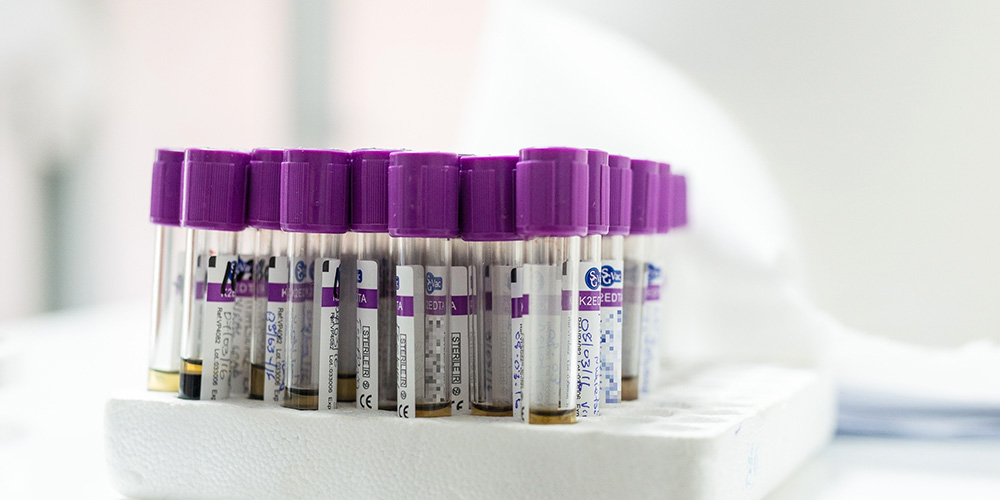
Subscribe to our English-language newsletter
Sign up for the Uni News Weekly newsletter and receive the weekly highlights directly in your inbox every Thursday.
Researchers have developed an approach to “deleting” a blood system affected by leukemia while simultaneously building up a new, healthy system with donor blood stem cells. Writing in the journal Nature, the team reports on the promising results obtained in animal experiments and with human cells in the laboratory.

He conducts preventative health research in Lesotho, improves clinical research in Switzerland, and still manages to find time for his passion: music. As structured and focused as the epidemiologist and clinical researcher’s work is now, his career began almost by accident.

Receptor proteins serve as the “eyes and ears” of the cell. The largest receptor family are the so-called G protein-coupled receptors. They respond to highly diverse stimuli ranging from photons to hormones and odorants. Researchers at the University of Basel have discovered a unique recognition pattern that works like a barcode and tags the receptor for desensitization. By this mechanism, signaling in cells is rapidly switched off when it is no longer needed.
Adam Hearn is holding a copy of his doctoral thesis, though a doctorate wasn’t always on his horizon. For a long time, the 45-year-old rejected the idea of an academic career. As an academic, he is making the case for sustainable energy. And – with his personal commitments – demonstrating what each of us can do to reverse climate change.

The University Council has appointed Professor Niklaus Labhardt as professor of clinical epidemiology. In addition, two individuals were promoted to full professors and two professorships were approved at the Faculty of Medicine.
A large-scale study in the scientific journal Science reveals that the Epstein-Barr virus responsible for causing glandular fever is involved in the development of multiple sclerosis. Professor Jens Kuhle, who participated in the project, summarizes the results in an interview.

The data on viruses that Prof. Richard Neher at the Biozentrum, University of Basel, receives every day, gives him a precise overview of the development of the SARS-CoV-2 virus and the variant Omicron. Indeed, it is a huge amount of data, more than he and his team has ever had about any virus before. With the online platform Nextstrain, he and his team follow in real-time how the pathogen is spreading worldwide.

Viruses such as HIV or the pathogen that causes hepatitis C can overwhelm the immune system. One approach to developing vaccines for these chronic infections has until now been aimed exclusively at what are known as the memory B cells, a specific type of immune cells. Researchers at the University of Basel now report that these cells need the help of other memory cells to effectively defend the body against chronic viruses. This is an important finding in vaccine design.

Immune cells protect our body against invading pathogens. The chemokine receptor CCR5 on the surface of T cells plays an important role in this process. However, CCR5 also is used by the HI-Virus as entrance gate into T cells. A research consortium led by the University of Basel has now deciphered the mechanism of CCR5 receptor activation. The study provides important insights for the development of effective treatments for AIDS, cancer and inflammatory diseases.


Sign up for the Uni News Weekly newsletter and receive the weekly highlights directly in your inbox every Thursday.

